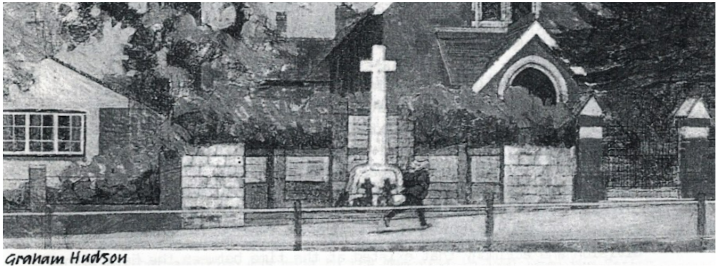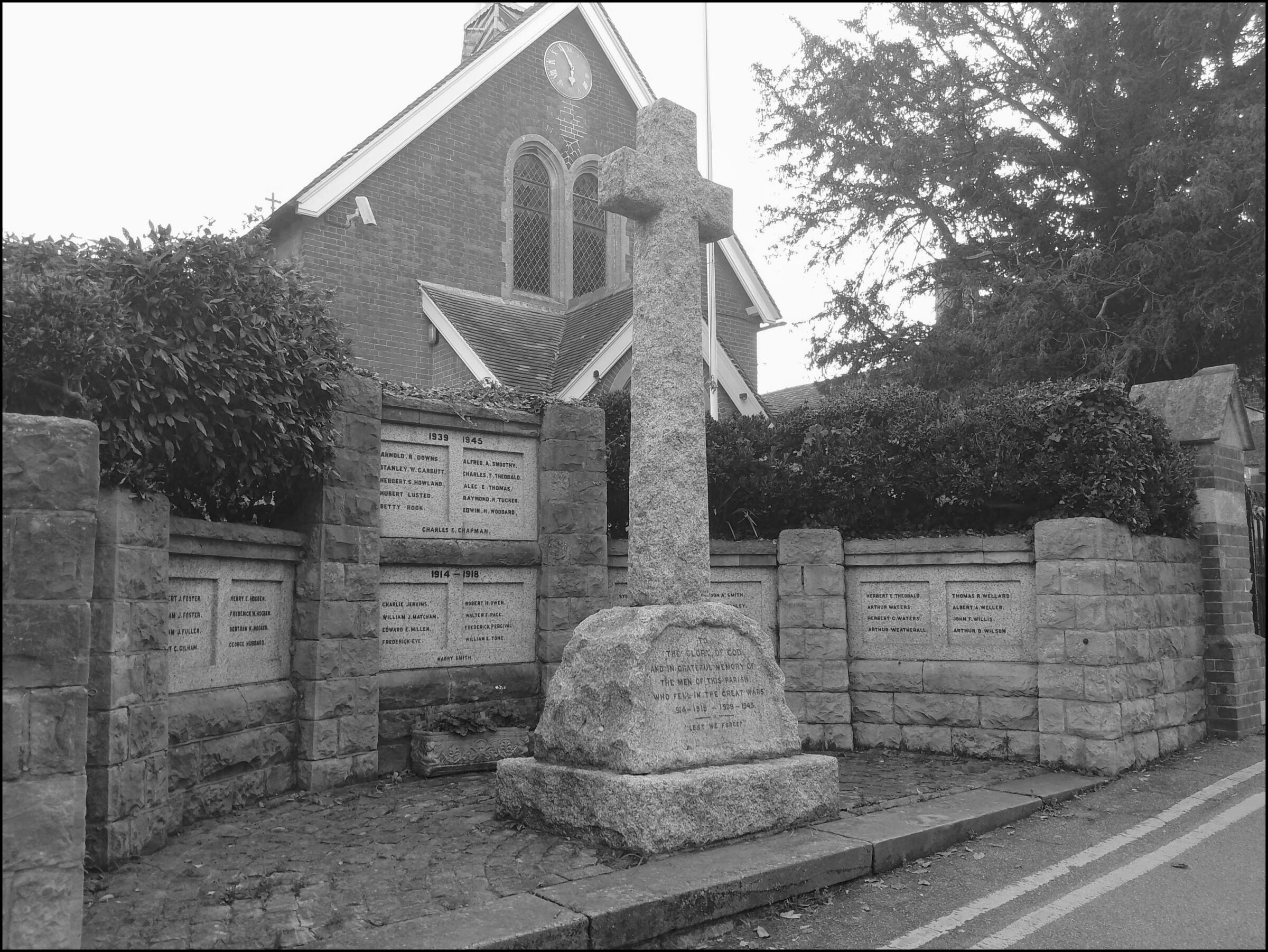
During the summer of 1919, throughout the country, plans were being made for Peace celebrations following the end of the Great War, and thus it was that on 30th July 1919 the residents of Boughton under Blean gathered together at a Parish Meeting in the St Barnabas Church room to appoint a committee to consider and carry out suggestions for celebrations and erecting a Memorial to those who had lost their lives in the war.
The Parish Council became the nucleus of the committee with the power to add to its numbers. The local Vicar, the Rev. W.E. Watson was one of the driving forces, and writing in the Parish Magazine expressed the hope that with regard to the Memorial, all forms of selfishness would be kept out of the matter, especially as there was a great temptation to profit on the memory of departed heroes.
He was not over impressed with some of the suggestions put forward that a Memorial might take the form of Public Bathes or Recreation Rooms or a bus shelter, as useful as these things might be. He reminded everyone that ‘A Memorial is something that reminds, and as those who have passed away have gone into the unseen world, it is obvious the only fitting Memorials can be those that remind us of that.’
It had been agreed that the Memorial should be paid for by public subscription, the sum required was £350 and it was hoped that all of the 400 households in the parish would contribute at least one pound, although it was expected that some would give much more and some less.
It was not until a year later in June 1920 that the distribution of Memorial Appeals were left at every house in the parish and by July, 69 households had responded with a total of £200. One household alone had given £50 and another £20. After the initial outflow, the subscriptions came in much slower.
There was also some dissension about the design as some did not altogether approve of a cross for the Memorial but the design was finally agreed by December 1920. Another problem was the bitter division and acrimony that existed at the time between the Established Church and the Wesleyans who objected to a Memorial being built on land owned by the Church of England. However, discussions with the Ecclesiastical Commissioners brought about a compromise, the land on which the Memorial was to stand would be given to the Parish Council thus making it a Civil Memorial. The Deed of Conveyance was signed in July 1921 and building commenced. The commission was given to on James Bruce, a private builder formerly employed by a Faversham firm called Millen and Chrisfield.
For the unveiling of the Memorial at 2:30pm on Sunday 11th December 1921, no more fitting person could have been chosen for the task than Lt. Colonel Philip Neame VS DSO, whose family had been at one time, resident in the parish and whose achievements, the whole District was proud.
The Dedication of the Memorial was carried out by a former Vicar of the parish, the Rev Canon Maxwell Spooner and prayers were said by the Rev W.E. Watson and the Wesleyan Minister.
Despite the completion of the Memorial, the outstanding account to pay for it dragged on into 1922, and despite fund raising events such as a special showing of the film ‘Inheritance’ at the Boughton Cinema and a Whist Drive that produced together a further £13-14s-5d, the debt could not be cleared.
Finally, in April 1923, at a fund raising concert given by the local school that collected £12, local landowner and Magistrate Sir Walter Berry and his wife agreed to close the account, considering that the Memorial was a small but suitable recognition of everyone’s gratitude to, and the honour due to those who gave their lives for us, and it was time it was paid for. The account was finally closed on 12th May 1923.
Fifteen years later, in 1938 a pair of stone pillars was added to the front of the Memorial, supporting three ornamental chains. The chains disappeared sometime in the 1970’s and the intrusive pillars were removed in 1990.
In 1948, after the second World War it was agreed to add another panel to the Memorial at a cost of £64, paid again by public subscriptions. The Unveiling and Dedication took place on Sunday 27th February 1949 the task being carried out by Mrs S. Berry of Brenley.
A further addition was made to the Memorial in 1991 when the Parish Council authorised the name of Harry Smith to be added to the 1914/1918 Roll of Honour.
Harry Smith had been born in 1884 at Blean Cottage, Colonels Lane, joining the ‘Buffs’ Regiment at around the age of 18, serving 8 years with the colours and 4 in the reserves, he reinlisted in 1914 and was wounded in action at Givenchy, France on 2nd January 1918. He died four days later on 6th January.
It took 75 years for his bravery and sacrifice to be officially recognised in his native parish, but today his name stands alongside the names of the other soldiers from this Parish who gave their lives that others might live in freedom.

The Memorial stands today as a reminder to us all of the unending debt we owe to so many people.
